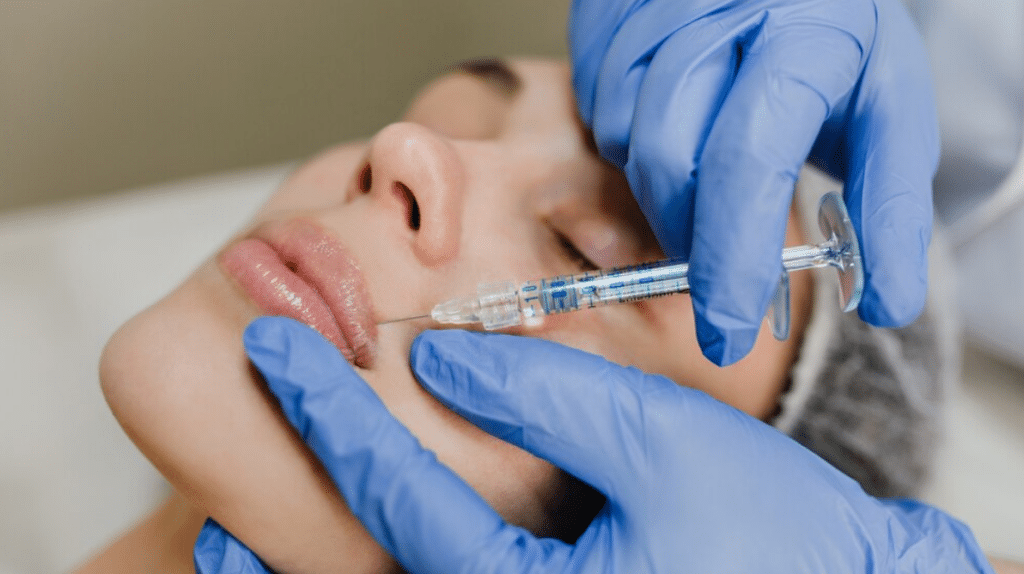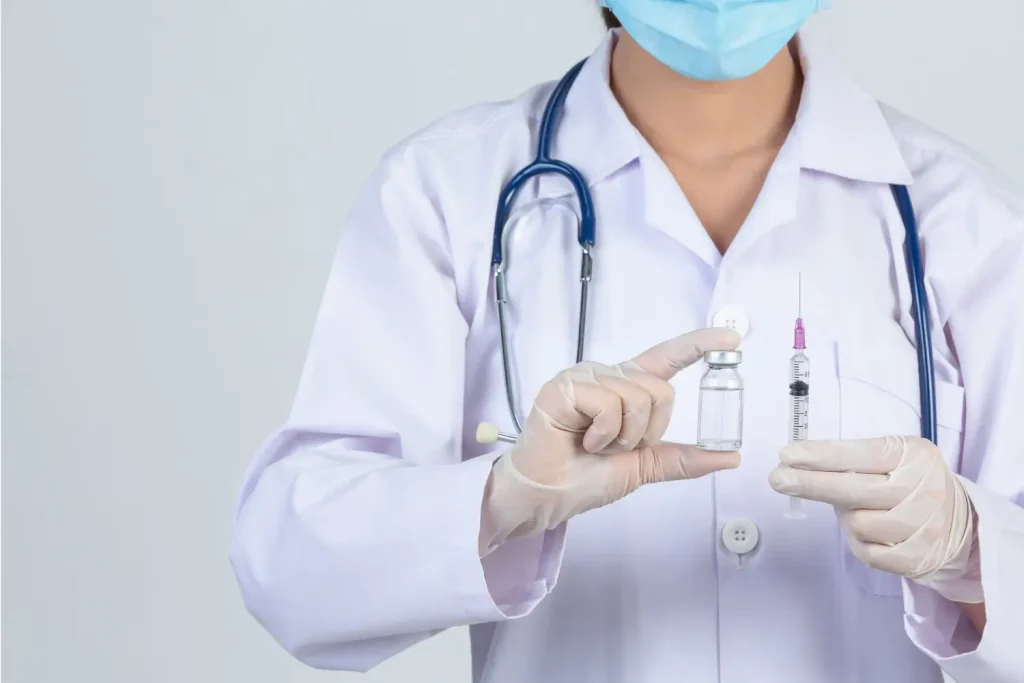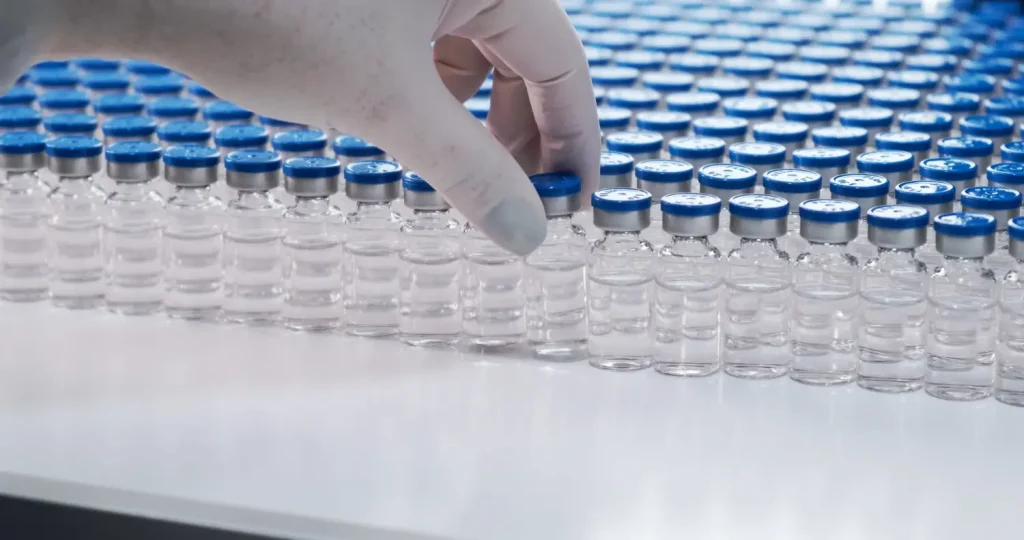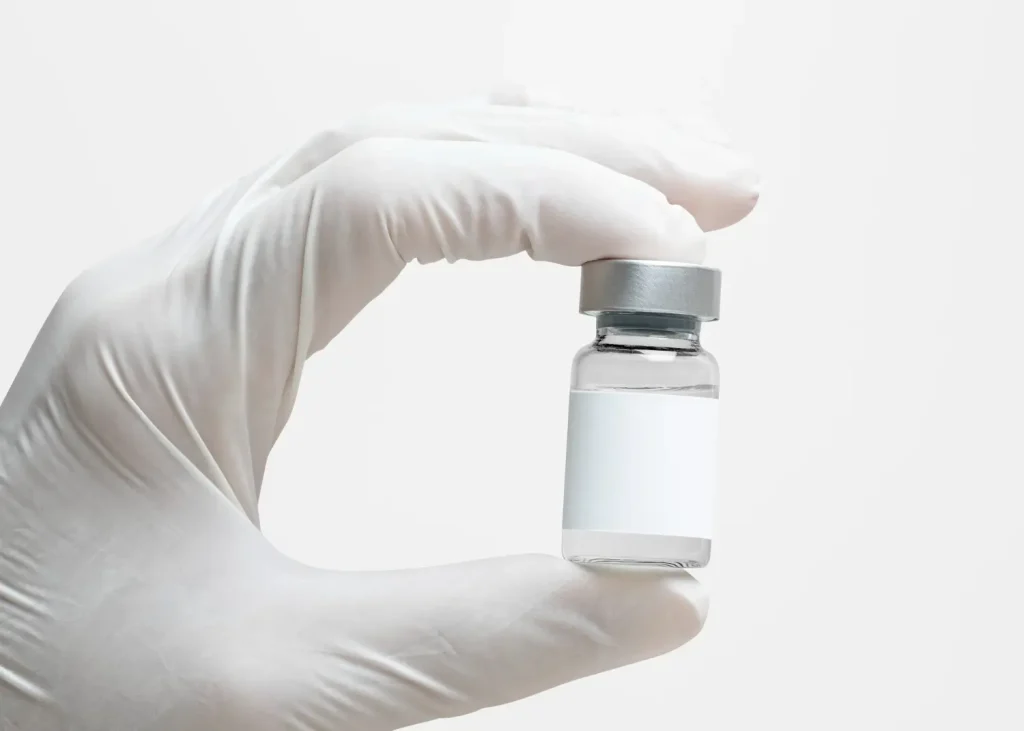In 2020, ZipDo Statistics reported about 6.2 million Botox injections, making it a popular choice for those looking to maintain a youthful appearance. Interestingly, it made up nearly half of the US market for facial injections.
While most people know Botox for its ability to reduce the appearance of aging, it has several other less widely recognized uses. These uses extend into medical treatments and other less-known cosmetic enhancements, showing that Botox is more versatile than commonly thought.
This article will cover the range of ways Botox can be used for cosmetic purposes and other conditions, offering insights into its multifaceted applications.
Key Takeaways
- Botox’s popularity spans all ages, reflecting a broader acceptance of cosmetic treatments beyond wrinkle reduction.
- Botox has several medical applications, including treatments for migraines, excessive sweating, and muscle spasms, showcasing its versatility.
- Choosing the right practitioner for Botox injections is crucial for ensuring safety, effectiveness, and satisfaction with the results.
- The cosmetic industry is continually innovating, with advancements in Botox application techniques and expanding uses in medical and aesthetic fields expected to grow.
- Proper preparation and post-treatment care are essential for achieving optimal outcomes and minimizing potential side effects from Botox treatments.
Understanding Botox

What is Botox?
Botox, or botulinum toxin, is a potent neurotoxic protein produced by the bacterium Clostridium botulinum and related species. It prevents the release of the neurotransmitter acetylcholine from axon endings at the neuromuscular junction, causing flaccid paralysis.
While renowned for its association with botulism, botulinum toxin finds application in both medical and cosmetic fields. Among its seven main types, labeled A to G, types A and B are predominantly utilized for commercial and medical purposes, owing to their potential in causing human disease. This raises the question: “Does Botox improve skin texture?“
How Does Botox Work?
Botox works by blocking certain nerve chemical signals, mainly signals that cause muscles to contract. This mechanism is particularly useful for relaxing facial muscles that contribute to wrinkles and fine lines, and potentially does botox improves skin texture.
Beyond its cosmetic uses, Botox is also employed to alleviate symptoms of various health conditions, such as neck spasms, muscle spasms, lazy eye, excessive sweating, migraines, and bladder problems.
The Traditional Role of Botox in Aesthetics
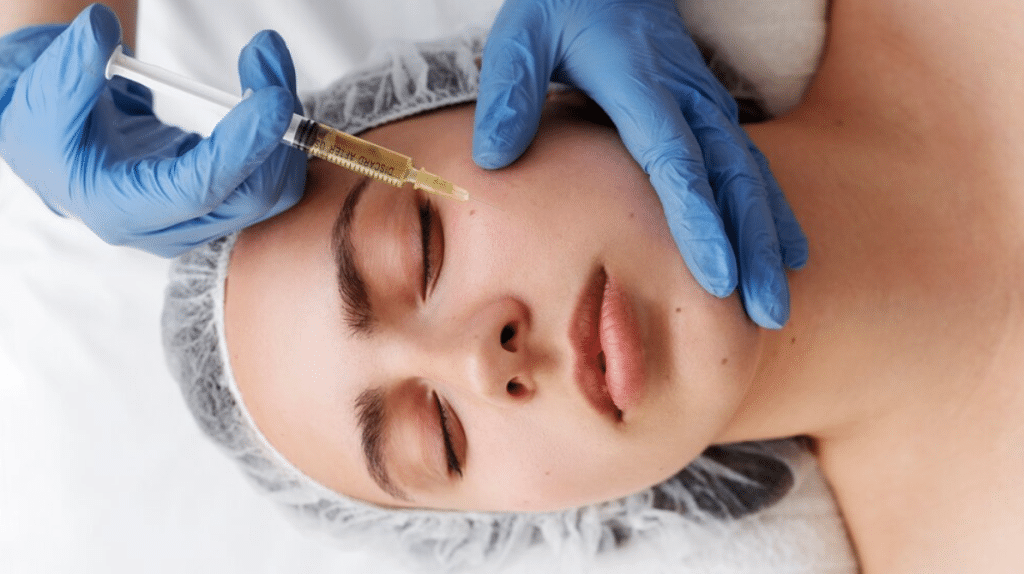
Wrinkle Reduction
The primary and most well-known use of Botox in aesthetics is for wrinkle reduction. By blocking nerve signals that cause muscles to contract, Botox can smooth out wrinkles and fine lines on the face.
This is especially effective for dynamic wrinkles that appear during facial expressions, such as frowning or squinting. The results of Botox injections for wrinkle reduction are temporary, typically lasting 3 to 4 months, and require repeat treatments to maintain the effects.
Fine Lines and Crow’s Feet
Botox is also extensively used to address fine lines and crow’s feet around the eyes. Crow’s feet, which are the lines that fan out from the corners of the eyes, are caused by repetitive muscle movements like smiling, squinting, or laughing.
Botox injections relax the muscles around the eyes, reducing the appearance of these fine lines and giving the skin a smoother, more youthful appearance. As with other cosmetic applications, the effects are temporary and necessitate regular follow-up injections to sustain the desired outcome.
Surprising Cosmetic Uses of Botox
Jawline Contouring
Botox can significantly alter the shape of the jawline, transforming an overly square and muscular jaw into a more refined and feminine shape. This is achieved by injecting Botox into the primary chewing muscle masseter. By reducing the size and activity of this muscle, Botox effectively softens the jawline’s appearance.
Gummy Smile Correction
A “gummy smile” is characterized by an excessive display of gum tissue when smiling. Botox offers a simple, non-surgical solution that injects it into the upper lip. This relaxes the retractor muscles, resulting in the upper lip covering more of the gum, producing a balanced, aesthetically pleasing smile.
Hyperhidrosis Treatment (Excessive Sweating)
Hyperhidrosis, or excessive sweating, can be distressing, affecting social interaction and confidence. The FDA approves Botox for treating hyperhidrosis by temporarily blocking the chemical signals from the nerves that stimulate sweat glands. This treatment is especially effective for underarms, palms, and feet, relieving for six to seven months.
Migraine Relief
The FDA has approved Botox for treating chronic migraines, a condition characterized by headaches lasting at least 15 days a month. Botox is believed to help prevent migraines by inhibiting the release of peripheral nociceptive neurotransmitters, reducing muscle contractions that can trigger migraines.
Patients typically receive injections every three months, and studies have shown it can significantly reduce the number of headache days.
Eyebrow Lift
Botox can achieve a subtle eyebrow lift, mimicking the effects of a brow lift surgery to some extent. By injecting Botox into the muscles that pull the eyebrows down, these muscles are relaxed, causing the eyebrows to lift slightly. Opening up the eye area can help create a more youthful appearance.
Botox for Body Aesthetics
Neck Bands
Neck Botox, or the Botox neck lift or Nefertiti neck lift, addresses aging signs such as sagging skin, prominent vertical bands, and horizontal neck wrinkles. Utilizing 20-50 units of Botox, this treatment relaxes the neck muscles, preventing them from contracting and causing the skin to sag.
Cleavage Rejuvenation
Cleavage rejuvenation, focusing on the chest and neck, revitalizes one of the first areas to show aging signs. Treatments aim to restore youthful appearance through a combination of innovative procedures. Specific techniques or products for cleavage rejuvenation weren’t detailed in the sources. However, they generally involve principles similar to hand and neck treatments to enhance skin quality and appearance.
Hand Rejuvenation
Our hands change over time, revealing aging through more prominent veins and tendons. Dermal fillers effectively rejuvenate hands by immediately restoring volume loss on the back of the hands. This treatment results in smooth, youthful-looking hands with a long-lasting natural appearance.
The Procedure: What to Expect
Consultation
The initial step involves a consultation to determine candidacy for the treatment. This is crucial for tailoring the procedure to individual needs and ensuring safety, especially for those with specific health conditions or who are pregnant.
The Botox Injection Process
For neck bands, the process involves cleaning the neck and marking injection sites on the platysma muscles, lower jawline, and along any horizontal lines. The procedure typically takes up to ten minutes. It is generally painless, with immediate activities like wearing a loose or V-neck shirt recommended for comfort.
Post-Treatment Care
Post-treatment, patients are advised to avoid exercises, bending, applying pressure to the treated area, consuming alcohol, and exposing the area to heat for 24 hours to minimize bruising and maximize results. Side effects are usually minimal, including bruising, swelling, redness, and mild pain.
Safety and Side Effects
Common Side Effects
Botox injections, generally considered safe when administered by qualified professionals, may cause temporary side effects. Common reactions include pain, swelling, or bruising at the injection site, headaches or flu-like symptoms, droopy eyelids or crooked eyebrows, and watery or dry eyes.
Rare Complications
Though uncommon, Botox can lead to more severe issues if the toxin spreads beyond the treatment area. Symptoms of such spread can include muscle weakness, vision problems, difficulty speaking or swallowing, breathing difficulties, allergic reactions, and loss of bladder control. These symptoms require immediate attention from a healthcare provider.
Myths vs. Facts: Understanding Botox
Myth: Botox is Unsafe and Can Lead to Botulism
Fact: Botox is derived from a bacterium called Clostridium botulinum. In large amounts, botulism, a severe condition affecting breathing and muscle control, can cause botox. However, in the controlled, sterile, and diluted form used for medical and cosmetic procedures, botox is safe and does not cause botulism.
Myth: Botox Only Works for Facial Wrinkles
Fact: While Botox is widely known for its ability to reduce the appearance of facial wrinkles and fine lines, its applications extend far beyond cosmetic enhancements. Botox can also effectively manage various medical conditions, such as chronic migraines, cervical dystonia, overactive bladder, and excessive sweating.
Choosing the Right Practitioner
Importance of Experience
The outcome of your Botox treatment largely depends on the practitioner’s expertise. An experienced practitioner ensures the procedure’s effectiveness and minimizes potential risks.
Qualified professionals, such as dermatologists, plastic surgeons, or licensed nurse practitioners with specialized Botox training, are preferable. Board certification in their field indicates a high standard of care and commitment to ongoing education, making it an important criterion when selecting your provider.
Questions to Ask
When consulting with potential Botox providers, it’s essential to ask the right questions to gauge their suitability:
- Ask about their qualifications, including their medical license, board certification, and specific training in Botox injections.
- Inquire about their experience with Botox, the precise number of procedures they’ve performed, and their familiarity with treating your areas of concern.
- Request before-and-after photos of previous clients to evaluate their aesthetic style and the effectiveness of their treatments.
- Discuss the consultation process to understand how they plan to tailor the treatment to your needs.
- Check their facility’s hygiene and safety standards to ensure a clean and safe treatment environment.
- Ensure they use genuine Botox products from reputable sources to avoid counterfeit or diluted products.
Conclusion
Botox offers many applications beyond traditional wrinkle reduction, including medical treatments and innovative cosmetic enhancements. The success of Botox treatments heavily relies on the practitioner’s expertise, making the choice of provider critical. As the cosmetic industry evolves, Botox’s uses are expected to expand further, offering new possibilities for patients seeking aesthetic and medical benefits.
About: Medical Spa RX equips medical practices with top-tier products, including safe options like Ellanse filler, which is rigorously tested for safety. Addressing common queries such as “are Botox results immediate,” we ensure you have access to all necessary information and supplies. Our simple and easy-to-navigate purchasing process allows you to quickly obtain products like Profhilo and other popular, reliable names. With special discounts, wholesale rates, and free shipping for bulk purchases, your practice can maintain a good stock and continuously provide a range of treatments.
FAQs
- What is Botox, and how does it work?
Botox, or botulinum toxin, is a neurotoxin that temporarily paralyzes muscles by blocking nerve signals. It is primarily used to reduce the appearance of wrinkles and for various medical conditions.
- What are some lesser-known uses of Botox?
Beyond wrinkle reduction, Botox is used for jawline contouring, gummy smile correction, treating excessive sweating (hyperhidrosis), migraine relief, and as an eyebrow lift.
- How long do the effects of Botox last?
The effects of Botox for cosmetic purposes typically last 3 to 4 months, requiring repeat treatments to maintain the effects.
- What should I consider when choosing a Botox practitioner?
Look for a licensed medical professional with specialized training in Botox, verify their board certification, and assess their experience and reputation through reviews and before-and-after photos.
- What are the common side effects of Botox?
Common side effects include pain, swelling, or bruising at the injection site, headache, flu-like symptoms, and temporary facial weakness or drooping.
References
ZipDo Statistics. (n.d.). Botox Usage. Retrieved from https://zipdo.co/statistics/botox-usage/
Mayo Clinic. (2021, March 31). Botox injections. Retrieved from https://www.mayoclinic.org/tests-procedures/botox/about/pac-20384658
Penn Medicine News. (2018, July). The Surprising Uses of Botox. Retrieved from https://www.pennmedicine.org/news/news-blog/2018/july/the-surprising-uses-of-botox
Cleveland Clinic. (n.d.). Botulinum Toxin Injections. Retrieved from https://my.clevelandclinic.org/health/treatments/8312-botulinum-toxin-injections American Society of Plastic Surgeons. (n.d.). Botulinum Toxin – Cosmetic: Risks and Safety. Retrieved from https://www.plasticsurgery.org/cosmetic-procedures/botulinum-toxin/safety

